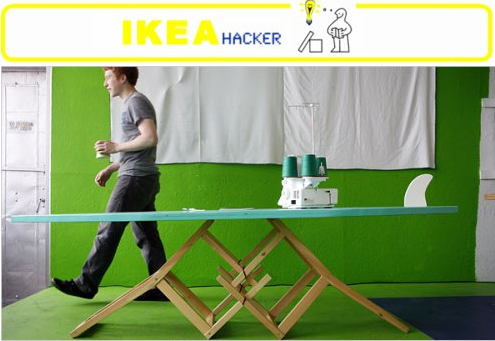What’s TrueTalk?
It’s a way of communicating that lets your organization know you’re serious about the importance of innovating and of executing; that you’re ready to get beyond “business as usual”; ready to lead in new ways.
We all hear leaders everywhere exhorting their organizations to be more innovative, more imaginative. But, repeating these mantras does not help people to know how to do it.
Many knowledge workers think that innovation happens somewhere else—R & D, design centers, or “going offsite.”
But we’ve found that the real how of innovation today is constant, on the job, work-different behavior; it’s about everyone at all levels “getting it.”
Nowadays, we believe the formula for success looks something like this:
We no longer live in an “either/or” world. Today, it’s “both/and” or it’s curtains.
Innovation without execution? Empty ideas.
Executing old thinking? Pointless rigor.
In this article, we’ll take a look at developing an organization that gets the how of innovation.
Innovation
First, a definition. Innovative ideas are those that are both novel and useful. It takes both to make ideas valuable.
Why is it that some organizations regularly generate innovative ideas and others don’t?
We think an organization’s culture is a key differentiator between the two.
Creating a culture that enables individual and collective innovation is one of a leader’s greatest challenges. We’ve found that innovative cultures share a key characteristic: they’re seriously playful.
What does that mean?
It means that everybody approaches the serious business of delivering customer-focused value with a playful attitude.
Playful doesn’t mean “frivolous.” Ever watch kids playing? What they’re doing’s seriously important to them. What about the growth of video and online games? Psychologists studying play have found that we use play to help us explore new territory; play helps us learn.
Playful means approaching something important as if it were a game; as if it were a treasure hunt. And it’s those two little words, “as if” free people to try things they wouldn’t otherwise try. Which is where innovation happens: trying things out, tinkering, fiddling, constantly looking for something better, more interesting, novel.
How can you create an environment in which people innovate? Try these things for starters.
1. Positive Emotion – Our experience agrees with the work Harvard Business School’s creativity expert Theresa Amabile. She’s found that creativity thrives in positive environments. Creativity and positive emotion feed on one another in innovative cultures. This doesn’t mean uncritical acceptance of any and all ideas. It means establishing an environment in which new ideas (and new idea generators) are respected and given a chance to flourish. Give new ideas room to grow by developing an open culture that lets people express themselves free of fear or embarrassment.
2. Collaboration Trumps Competition – Contrary to popular myth, innovation rarely emerges from head-to-head competition. While one team might innovate in a competition with another team, competition within teams seldom produces desired results. Internal competition makes members reluctant to share ideas, and sharing ideas is the cornerstone of collective innovation. Enable an environment that rewards and recognizes collaboration if you’re interested in innovation.
3. Inquiry for reflection – We’ve found that when you ask the right people some very basic questions, they collectively come to own their solutions. What do we do well? How could we perform better? What gets in our way? What should we do differently? Getting the right people together to reflect on the formula for success provides the platform to build the new how mindset.
4. Relevance to Real Time Performance – We hear repeatedly that organizations are too busy with “now” to worry about “next”: “we don’t have enough time,” “we can’t get to it,” “there aren’t enough hours in the day.” To unleash the how of innovation demands a deep appreciation for the way we work now. The opportunity is to collectively explore ways to experiment, test new models, and capture the learning. Innovative thinking is contagious when it’s grounded in real-time work and immediately improves individual and group performance.
5. Everyone’s Creative – Many of us have come to believe that “creatives” are different from other people. But innovative cultures don’t leave people out, they invite them in. Even though we all differ in our natural abilities, creative thinking, like all complex skillsets, improves with practice. Practicing creative thinking leads to innovative breakthroughs. If you’re serious about developing an innovative culture, include everyone.
6. Technology Keeps Us in the Know – We always get excited when companies are responsive to using their technological tools to help colleagues share their learnings. Workers who are set up to tune in can stay informed about how teams are testing and experimenting. Most importantly, learning from mistakes is critical to the how of innovation. By staying connected, new teams shouldn’t have to make the same mistakes.
7. Reward Effort AND Results – Remember the old management cliché?: “What gets measured, gets done.” Well, how do you measure innovation? Too often, managers make the mistake of believing that they should only reward team members if their work directly delivers financial results. We’ve seen plenty of examples of innovative ideas that initially “failed to deliver,” only to become big hits (sometimes in slightly different form) when resurrected later. So, leaders need to encourage efforts that don’t quite make it as well as those that do. One key to creating an innovative culture is understanding that innovators thrive on the opportunity to innovate. If you’re committed to developing continuous innovation, find ways to let innovators know that you value them, recognizing their efforts as well as their results.
These are just some of the key characteristics of creative social systems. Doing these things well will put you squarely on the road to getting the how of innovation.


















 A great companion to your
A great companion to your 
